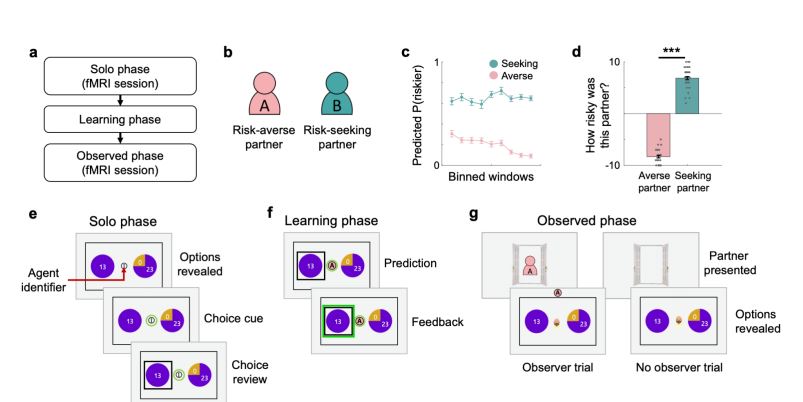Abstract
A research team, led Professor Dongil Chung in the Department of Biomedical Engineering at UNIST has unveiled fascinating insights into how individuals' decision-making processes are influenced by the presence of others.
The research indicates that individuals adjust their decisions based on the risk preferences of those observing them. This challenges the prevailing academic belief that the presence of others typically encourages risk-taking behavior. Instead, the study suggests that people are more likely to adopt risk-averse tendencies when they perceive their observers as cautious.
Importantly, the study found a correlation between the extent to which individuals mirror others' tendencies in their decision-making and the functional connectivity between two specific brain regions: the Temporoparietal Junction (TPJ) and the Medial Prefrontal Cortex (mPFC). This functional connectivity refers to the synchronized activation of different parts of the brain during specific tasks, highlighting their cooperative roles in decision-making.
HeeYoung Seon, the first author of the study, noted, "Existing theories do not adequately explain why a young driver may speed with friends yet drive more cautiously when accompanied by parents. We initiated this study to bridge the gap between these contrasting behaviors."

Figure 1. Experimental paradigm.
To conduct their research, the team designed a three-phase experiment involving 43 participants. In the first phase, participants' risk preferences were evaluated through a game in which they had to choose between a guaranteed safe option, yielding a certain amount of money with 100% probability, and a risky option with variable probabilities (25%, 50%, and 75%). In the second phase, participants learned about their partner's risk orientation: one partner was risk-aware, while the other was risk-averse. Participants inferred their partner's preferences without prior knowledge and received feedback during the process. In the third phase, participants engaged in the same game from the first phase, but this time considering a risk-averse or risk-seeking partner, or without any partner at all. The first and third phases of the experiment were conducted using functional MRI (fMRI) to analyze brain activity.
The results showed that participants were more likely to select risky options when the observer favored risk-taking compared to scenarios without an observer. Participants tended to mimic the observer's disposition in their choices.
Upon analyzing the fMRI data, the research team discovered that the mPFC was activated when participants acknowledged the observer's presence and during decision-making. Meanwhile, the TPJ was activated specifically during the decision-making stage. Notably, individuals with stronger functional connectivity in the presence of an observer were more inclined to reflect the preferences of others in their decisions. Both the mPFC and TPJ are integral components of what is often referred to as the social brain.
Professor Chung stated, "This study implies that while an individual's core preferences remain unchanged, their decision-making can be significantly influenced by social factors."
The findings of this research have been published in the esteemed international journal, eLife on October 29, 2024. This study was supported in part by the National Research Foundation of Korea (NRF) and the KBRI basic research program through Korea Brain Research Institute funded by Ministry of Science and ICT (MSIT).
Journal Reference
HeeYoung and SeonDongil Chung, "Policy shaping based on the learned preferences of others accounts for risky decision-making under social observation," eLife, (2024).






